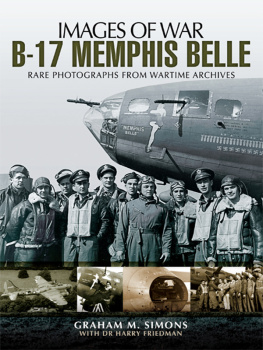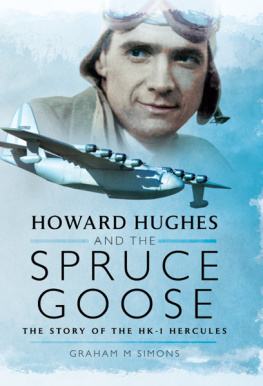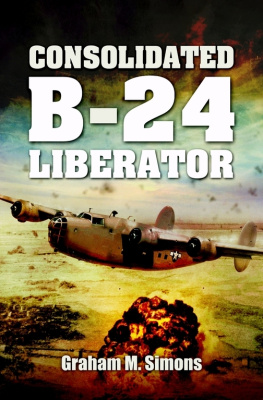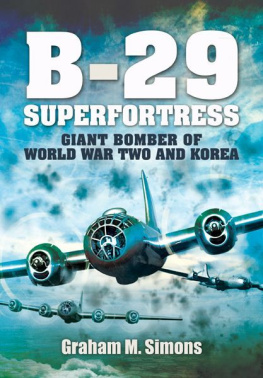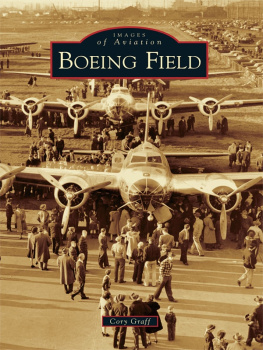Graham M Simons - Boeing 737
Here you can read online Graham M Simons - Boeing 737 full text of the book (entire story) in english for free. Download pdf and epub, get meaning, cover and reviews about this ebook. year: 2020, publisher: Pen and Sword, genre: Home and family. Description of the work, (preface) as well as reviews are available. Best literature library LitArk.com created for fans of good reading and offers a wide selection of genres:
Romance novel
Science fiction
Adventure
Detective
Science
History
Home and family
Prose
Art
Politics
Computer
Non-fiction
Religion
Business
Children
Humor
Choose a favorite category and find really read worthwhile books. Enjoy immersion in the world of imagination, feel the emotions of the characters or learn something new for yourself, make an fascinating discovery.
- Book:Boeing 737
- Author:
- Publisher:Pen and Sword
- Genre:
- Year:2020
- Rating:4 / 5
- Favourites:Add to favourites
- Your mark:
- 80
- 1
- 2
- 3
- 4
- 5
Boeing 737: summary, description and annotation
We offer to read an annotation, description, summary or preface (depends on what the author of the book "Boeing 737" wrote himself). If you haven't found the necessary information about the book — write in the comments, we will try to find it.
Boeing 737 — read online for free the complete book (whole text) full work
Below is the text of the book, divided by pages. System saving the place of the last page read, allows you to conveniently read the book "Boeing 737" online for free, without having to search again every time where you left off. Put a bookmark, and you can go to the page where you finished reading at any time.
Font size:
Interval:
Bookmark:

The Worlds Most Controversial Commercial Jetliner
Graham M Simons


Boeing 737
The Worlds Most Controversial Commercial Jetliner
First published in Great Britain in 2020 by Air World Books,
an imprint of Pen & Sword Books Ltd,
Yorkshire - Philadelphia
Copyright Graham M Simons
ISBN: 9781526787231
eISBN: 9781526787248
Mobi ISBN: 9781526787255
The right of Graham M Simons to be identified as Author of this work has been asserted by him in accordance with the Copyright, Designs and Patents Act 1988. A CIP catalogue record for this book is available from the British Library All rights reserved.
No part of this book may be reproduced or transmitted in any form or by any means, electronic or mechanical including photocopying, recording or by any information storage and retrieval system, without permission from the Publisher in writing.
Pen & Sword Books Ltd incorporates the imprints of Air World Books, Pen & Sword Archaeology, Atlas, Aviation, Battleground, Discovery, Family History, History, Maritime, Military, Naval, Politics, Social History, Transport, True Crime, Claymore Press, Frontline Books, Praetorian Press, Seaforth Publishing and White Owl.
For a complete list of Pen & Sword titles please contact:
PEN & SWORD BOOKS LTD
47 Church Street, Barnsley, South Yorkshire, S70 2AS, UK.
E-mail:
Website: www.pen-and-sword.co.uk
Or
PEN AND SWORD BOOKS,
1950 Lawrence Roadd, Havertown, PA 19083, USA
E-mail:
Website: www.penandswordbooks.com
A book of this nature would not have been possible without the help of many people and organisations too numerous to individually mention. That said, back in 1974 the world became aware of Deep Throat, the secret informant who provided information in 1972 to Bob Woodward, who shared it with Carl Bernstein. Woodward and Bernstein were reporters for The Washington Post , and Deep Throat provided key details about the involvement of US President Richard Nixons administration in what came to be known as the Watergate scandal. Jump forward nearly fifty years, and for this book very special thanks should go to my own secret informant who goes under the pseudonym of BJ for providing a great amount of information from within Chicago and Seattle.
I am indebted to many people and organisations for providing photographs for this story, but in some cases it has not been possible to identify the original photographer and so credits are given in the appropriate places to the immediate supplier. If any of the pictures have not been correctly credited, please accept my apologies.
I would however, like to offer my special thanks the Fellows, Members and Associates of the Worldwide Society of Civil Aviation Enthusiasts (WSCAE) - many of whom work in the global aviation industry as flight or ground crew or indeed on the spanners - for letting me have free access to their collections, including Dee Diddley, Ameen Yasheed, Wan Hunglo, Tsai Ing-Wen, John Hamlin, Bob Lehat, Kirk Smeeton, Ian Frimston, Carrie berg, Simon Peters, Robin Banks, Rick OShea, Hugh Jampton, Peter Clegg, Matt Black, David Lee, Emma Dayle, Dr Harry Friedman, Trymore Simango and Phil McCrackin.
The crisis surrounding the crash of two 737 MAX jetliners was the biggest challenge Boeing management faced in many years. However, it was not the companys darkest hour; in fact, it was not even the first time that 737s crashed due to a design flaw.
Boeing has faced challenges to its survival in the past. The human cost of losing two 737s to avoidable accidents should not and cannot be minimised - hundreds of lives were tragically cut short, and families torn apart. However, the evidence from past crises suggests Boeing will survive and thrive again, probably sooner than many are expecting - thanks in part to the hard lessons the company has learned from its latest challenge.
The company was founded by William E Bill Boeing and Commander G Conrad Westervelt in 1916, (see Boeing 707 Group, Pen & Sword 2017 by the same author) just in time to benefit from a surge of military orders during World War One. After the war, Boeing won lucrative airmail contracts from the federal government, and assembled a sprawling aviation conglomerate - its holdings included engine-maker Pratt & Whitney and what became United Airlines - aimed at dominating US aviation.
In 1934 the Roosevelt Administration cancelled the companys airmail contracts and broke up what it saw as an emerging monopoly. Bill Boeing was so upset by these moves that he quit the company that bore his name and sold all his stock. Unlike competing companies begun by aerospace pioneers such as Donald Douglas, Glenn Martin and James McDonnell, Boeing lost the driving force of its founder early on.
That could have been fatal for the enterprise - many aircraft companies failed during depression years - but it taught Boeing to operate without a visionary at its helm. Most of the companies whose founders stuck around later proved incapable of competing when that visionary faltered or died.
While Washington was prosecuting its trust-busting campaign against Boeing, the company introduced one of the most revolutionary products in its history. The Boeing 247 today is considered the first modern airliner. It was a monoplane rather than a biplane. It was all-metal rather than containing wood or canvas in its design. It had a streamlined shape and retractable landing gear to minimise drag. It even had a wing de-icing system.
The 247 was an impressive technological achievement, but few were sold. The airliner was eclipsed by the even more advanced Douglas DC-3, which could carry a larger number of passengers. In the end only seventy-five Boeing 247s were built, sixty which went to the companys airline unit that Washington would soon force it to divest.
Boeing and its competitors were rescued from the Great Depression by World War Two. Even before America entered the war, Washington launched a vast buildup of US airpower that multiplied the companys revenues. Boeing built the B-17 and B-29 bombers. But within weeks after victory was won in 1945, the government started wholesale cancellation of military aircraft contracts, resulting in around 70,000 Boeing workers losing their jobs. Boeing and its rivals thus entered the postwar period severely diminished and with uncertain business prospects.
Boeing transformed the B-29 airframe into a commercial airliner after the war, but what really lifted its prospects was the coming of the Cold War and the advent of jet engines. The Cold War generated demand for new Boeing bombers, most notably the jet-powered B-47 and B-52. Boeing also built hundreds of jet-powered tankers to support the bomber fleet, and work on that programme contributed to the development of its 707 jetliner via the Model 367-80 - a late-comer to civil aviation after the British, French, Canadians and even the Russians.
By the late 1960s, Boeing was the global leader in jetliners, having developed the single-aisle 727 similar to the earlier British DH.121 Trident and then the 737 - itself a concept from the British of fifteen years or so earlier - that was to become the most widely used commercial transport in history, and the 747 that held the world record for passenger-carrying capacity over four decades. Both designs were eventually eclipsed by Airbus products with their A320 and A380 respectively - a simple fact that grated on American egos.
Font size:
Interval:
Bookmark:
Similar books «Boeing 737»
Look at similar books to Boeing 737. We have selected literature similar in name and meaning in the hope of providing readers with more options to find new, interesting, not yet read works.
Discussion, reviews of the book Boeing 737 and just readers' own opinions. Leave your comments, write what you think about the work, its meaning or the main characters. Specify what exactly you liked and what you didn't like, and why you think so.




